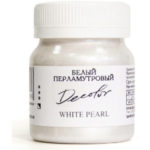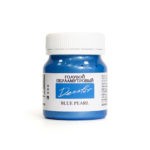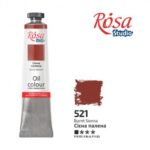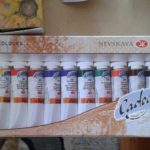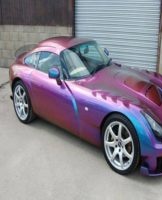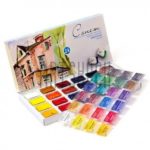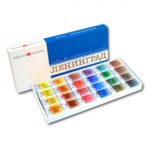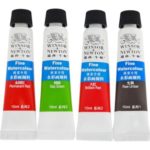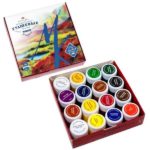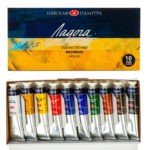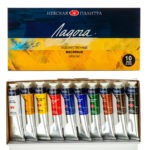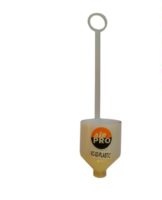Top 4 Types of Paints to Paint on Wood and What to Draw for Beginners
You can make art painting on any tree yourself. The main thing is to be patient, to purchase suitable paints and varnish. Materials for painting the panels can be ordered online. The easiest way to work is with acrylic. Products painted with oil paints are colorful and rich. To add shine to the finishing stage, the board can be varnished.
Types of painting on wood
Since time immemorial, wooden kitchen utensils have been painted with patterns. In this way, folk craftsmen decorated the objects of their simple life. Any technique of painting on wood is distinguished by simplicity of execution, free choice of image and availability of coloring pigments.
Mezen decor
In the Arkhangelsk region and the Komi Republic, in the lower course of the Mezen River, at the beginning of the 19th century, an original technique of painting wooden objects was born. Main characteristics:
- predominance of red and black colors;
- ornament reminiscent of woodcarving;
- the image of repeating figures of deer, horses and birds.
Kitchen utensils and various household items were painted with the Mezen technique. In the painting process, black soot and red ocher were used. They painted a tree without a primer and after drawing the pattern, it was covered with linseed oil. Objects painted with red and black patterns acquired a golden tint.
Mezen painting was revived in the middle of the 20th century by the descendants of the first masters who worked this original technique.
Khokhloma
Khokhloma wood painting is named after the village of Khokhloma, which is located on the territory of the Nizhny Novgorod region in the Volga region. The technique is ancient, dating back to the 17th century. There is a legend that it was invented by the Old Believers, icon painters. They first started painting kitchen utensils and furniture with gold patterns.
Khokhloma is a decorative pattern in red, green, yellow, made on a black background. The golden color of the paint is given by the use of tin or aluminum powder. Khokhloma is a repeating floral ornament or design in a primitive style. Objects depict birds, flowers, leaves, rowan berries, strawberries, wild strawberries. At the finishing stage, painted products are varnished and quenched in an oven. This procedure gives the items a golden sheen.
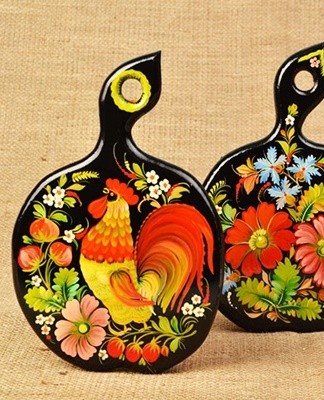
Painting of Severodvinsk
The Severodvinsk technique for painting wood and birch bark originated in the 18th century in the Arkhangelsk region along the banks of the North Dvina River. Masters painted red, mostly cooking utensils. Each village of the Arkhangelsk region was famous for its special equipment (Permogorsk, Boretskaya, Rakulskaya).
All Severodvinsk murals had common features: the application of a black border framing each image; designs in red, green, yellow; floral ornament or pattern. In the center of the composition, birds were often painted. Severodvinsk painting resembles the technique of applying enamel in a black outline. Currently, the ornament is painted with gouache and varnished.
Gorodets patterns
Gorodets machines are named after the town of Gorodets, located in the Nizhny Novgorod region. Painting appeared in the 19th century. Spinning wheels, household items, dishes, furniture, and even shutters and doors were painted with designs and ornaments in the style of the Gorodets technique. The predominant colors are red, yellow, green, blue.
Gorodets' technique is distinguished by an original plot. Usually it is a caricature of peasants, merchants, nobles in lush costumes. Artists painted scenes from life in a primitive folk style, decorating their paintings on the sides with floral ornaments. The design was applied to raw or primed wood with arbitrary strokes. At the final stage, the image was varnished.
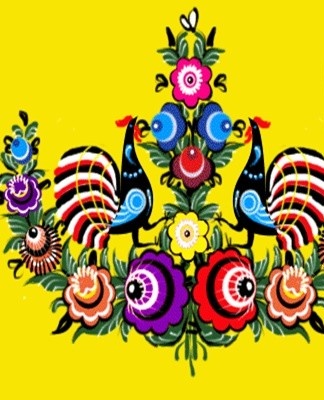
Stages of preparation for work
If desired, anyone can paint a wooden or birch bark object. You can create a drawing inspired by the beauty of flowers and plants yourself, or copy from an original by a professional artist.
Before you start painting wooden objects, you need to prepare. You can paint any object: a cutting board, a wooden box, cabinet doors, bedroom doors, a table top, a shelf.Before painting, wooden objects should be cleaned of old paint (if any), leveled and polished with fine-grained sandpaper.
List of preparatory works:
- cleaning objects (from dust, dirt, paint);
- polishing with sandpaper (if necessary);
- drying;
- primer.
Wooden objects can be primed with PVA glue diluted with water to a milk state. An ordinary cleric will do. After drying, you need to walk the surface with fine-grit sandpaper and cover it with a second, thicker layer of PVA and water. You should have a perfectly smooth board.
It must be remembered that PVA glue does not emphasize, but hides the structure of the tree. In addition, it gives a whitish coating and pallor to the image. Art linseed oil perfectly reveals the beauty of wood, however, it dries for a long time. Drying oil can also be used as a primer, but it is undesirable.
You can purchase an acrylic, alkyd, or oil-based primer. The type of primer should match the type of topcoat and be suitable for the paint (not "corrode" it). Before you start painting wooden objects, you need to purchase paints, brushes, sandpaper, primer varnish, coating varnish, pencil, rubber band.

How to choose paint for painting wooden blanks
After priming, the wooden surface can be covered with paints. The easiest to use is acrylic, durable - oil, transparent - watercolor.
Acrylic and oil
It is impossible to find a more suitable paint for painting wood than acrylic paint. It is well diluted with water, and after drying it creates a protective film and becomes water resistant. To paint a tree, it is advisable to buy artistic acrylic paint of the brand: "Acryl-Art", "Decolor", mother-of-pearl "Chameleon".
Oil paint is the most durable and reliable. To paint wooden objects, it is better to buy an art painting kit. Popular brands: Master-Class, Sonnet, Rosa, Ladoga. Thin oil paints with linseed oil (dries slowly) or thinner, pinene (dries quickly). Matte varnish can be used as a primer.
watercolor painting
Watercolors are transparent paints made without adding white and diluted with water. They are available in liquid, solid and soft form. There is also a paste-like watercolor. Liquid watercolor paints are suitable for painting a tree, however, they can be difficult to buy. Professionals dilute watercolor with distilled water.
The best watercolor manufacturers: Nevskaya Palitra, Sonnet, Winsor and Newton. Before using watercolors, a wooden product is not primed with varnish or PVA glue diluted with water is used as a primer.The painting technique resembles glazing: a smear is made with a wet brush on the surface and they wait for the paint to dry. Then a second layer of watercolor is applied (no more than three layers).
artistic gouache
You can paint wooden objects using so-called "artistic" gouache. A nursery or school for this work is not suitable. What is needed is artistic gouache, the label may contain the word "luxury" or "premium". The following paints are produced by the following companies: "Master-class", "Sonnet", "Tsvetik", "Aqua Color", "Spectrum", "Gamma". There are also gouaches with special effects: fluorescent, pearly, golden, silver, bronze.
The paint is dissolved in water and applied to the wood in a thin layer. The gouache dries from 30 minutes to 3 hours. The image is slightly whitish (pale white) due to the blending of white.
Aniline
Paints based on aniline (a synthetic bactericidal and toxic substance) are mainly used in the textile industry for dyeing fabrics. They have a significant drawback - they quickly fade in the sun. Aniline paints are transparent, well diluted with water. They are similar to watercolors, but more saturated in color.
Methods of translating images into wooden products
Experienced craftsmen, having primed a wooden surface, can safely apply a drawing with paints. For beginners, it is better to use stencils or make a preliminary sketch.
Stencil
The stencil method of painting a wooden surface is considered the easiest. True, it is only suitable for flat objects. Before painting a tree, you need to prepare a stencil, that is, a template for the future drawing. They make it out of paper or film.
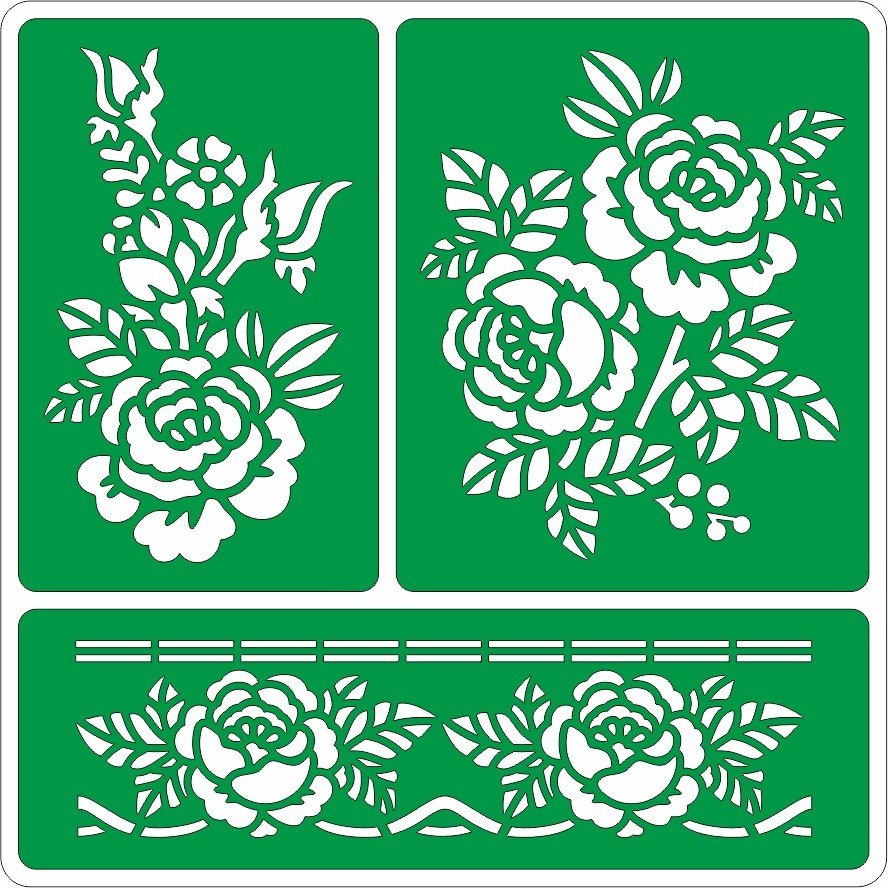
You can find a pattern or ornament you like on the Internet, print it using a printer on paper and cut out the outlines of all the images.
The stencil should be pressed tightly to the surface, fixed with adhesive tape and circle the recesses with a simple pencil. You can simply spray paint on the stencil or paint with a brush.
Point
Using dots, you can transfer an image to a surface, or even paint an object. A dotted translation of a drawing assumes the presence of a pattern on thin (tissue) paper and a simple sharp pencil. The paper image should be attached to the surface and the holes made with graphite. The more dots you get on the tree, the easier it will be to replicate the pattern. You can draw the entire ornament on a wooden object with multi-colored dots. True, for this you need to purchase acrylic paints in tubes with a sharp tip.
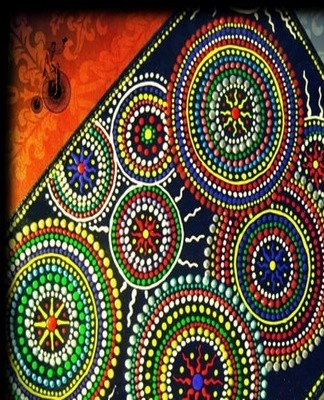
By sketch
Before painting a wooden object, you can draw it on paper.This is a trial drawing that will help you correctly determine the proportions of all the details of the ornament. The image is often made in color in order to understand what the future work will look like. According to the sketch, you can draw with a simple pencil on a wooden surface.
Some artisans use carbon paper to copy a finished design onto a tree.
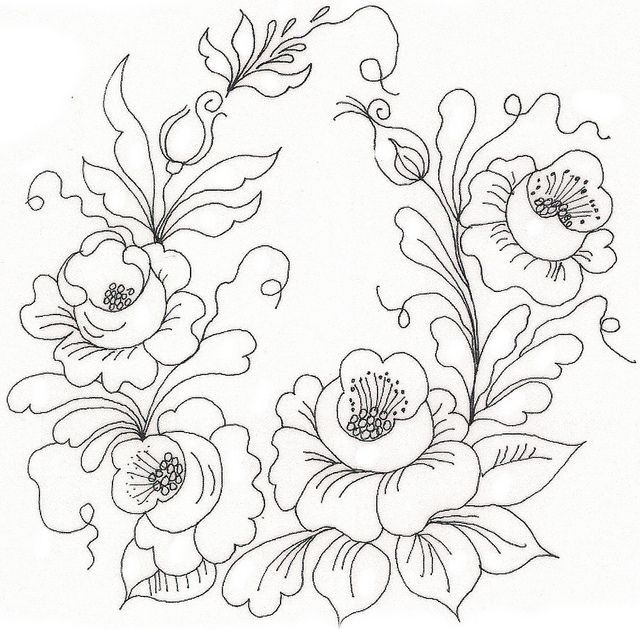
How to choose brushes
The choice of brushes depends on the type of paint. The brushes are made of nylon, polyester, pony, squirrel, goat. There are brushes made of badger, sable, bristle and columnar (from the weasel family). They are natural and synthetic, thin and thick, round and flat (flattened).
List of matching paints and brushes:
- for acrylic - synthetic, from a column, bristle;
- for watercolors - gentle squirrel, kolinsky, pony, goat;
- for oil - synthetic, silk, column;
- for gouache - squirrel, column, pony;
- for aniline paints - columnar.
When buying round brushes, you should pay attention to their thickness, that is, their diameter. All brushes are labeled from 0 to 20 and up. The thinnest are "zero". Thin brushes are needed to draw small details. Use medium sized brushes to paint the main design.
Flat brushes are only numbered by even numbers. It considers the smallest "2". Such a brush consists of a handle (wooden or plastic), a metal base (clamp) and a bundle of bristles. May have a flat, oblique and semi-circular top.
When choosing a brush, they look so that the metal clamp does not wobble, the handle does not bend, the bristles do not stick out. You need to iron the brush tip before buying. If the bristles remain in the hand, it is better not to buy the product.To paint on wood, you need several brushes of different thicknesses.
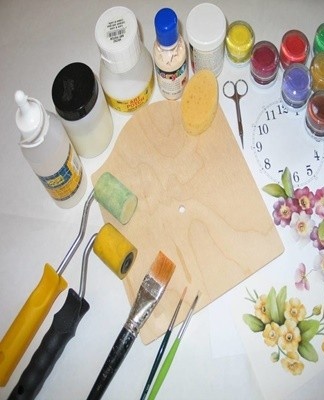
What varnish can be coated
After painting wooden items with paint, you need to wait at least a week, and then cover the product with varnish. The longer the painted thing dries, the better. If the varnish is applied to a damp surface, the pattern may distort. The paint must dry completely before varnishing.
List of suitable paints and varnishes:
- for acrylic - acrylic, water-acrylic, alkyd;
- for oil - alkyd, oil-based;
- for gouache - glossy or matte varnish for gouache;
- for watercolors - fixing varnish, topcoat for watercolors;
- for aniline paints - alkyd, acrylic.
As a finishing coat, you can use a matte or glossy acrylic varnish. It can be used if the drawing was done in acrylic or oil. Works painted with oil paint can be covered with oil varnish. It is true that it dries for a long time. For acrylic and oil, an alkyd or polyurethane varnish is suitable. This substance also dries for a long time, it has an unpleasant pungent smell, but it gives a perfectly smooth and shiny surface.
Useful tips for beginners
For painting, a hard tree (oak, poplar, beech, walnut, birch) or linden is suitable. The wood from these trees will not warp or crack.
Before painting the picture, let it dry well at room temperature. Force drying will cause the wood to crack. Before work, you need to carefully examine the board. There should be no cracks, wormholes or rot on it. The ideal thickness of the board is 1.5 to 2.5 centimeters. Too thin a board is prone to warping and the paint may crack on it.


